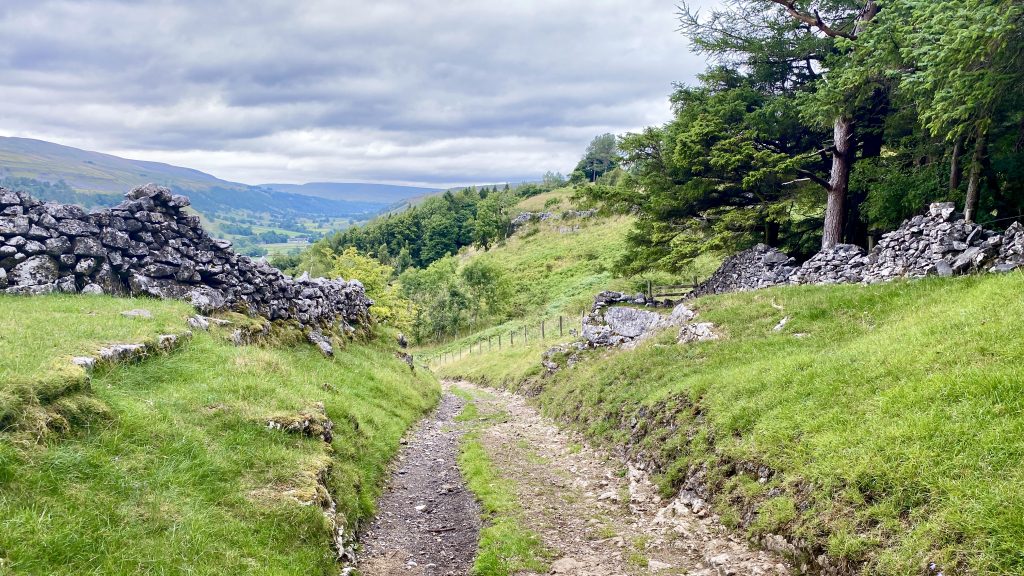East from Kettlewell through the Dowber Gill Beck valley to Providence Pot, north to Hag Dyke and up to the summit of Great Whernside. Generally south-east via Blake Hill to Sandy Gate, using the fence line and the boundary stones marked ‘W.H’ as a guide. South-west downhill to Mossdale and continuing by way of Mossdale Scar, Bycliffe and Kelber Gate to join the Dales Way. North-west past Conistone Pie and along Swineber Scar to Highgate Leys Lane, then back to Kettlewell via the Dales Way. A 13-mile walk in the Yorkshire Dales.

Recommended Ordnance Survey Map
The best map to use on this walk is the Ordnance Survey map of the Yorkshire Dales Northern & Central Area, reference OS Explorer OL30, scale 1:25,000. It clearly displays footpaths, rights of way, open access land and vegetation on the ground, making it ideal for walking, running and hiking. The map can be purchased from Amazon in either a standard, paper version or a weatherproof, laminated version, as shown below.
Standard Version
The start of the one-mile-long route through the Dowber Gill Beck valley to Providence Pot.
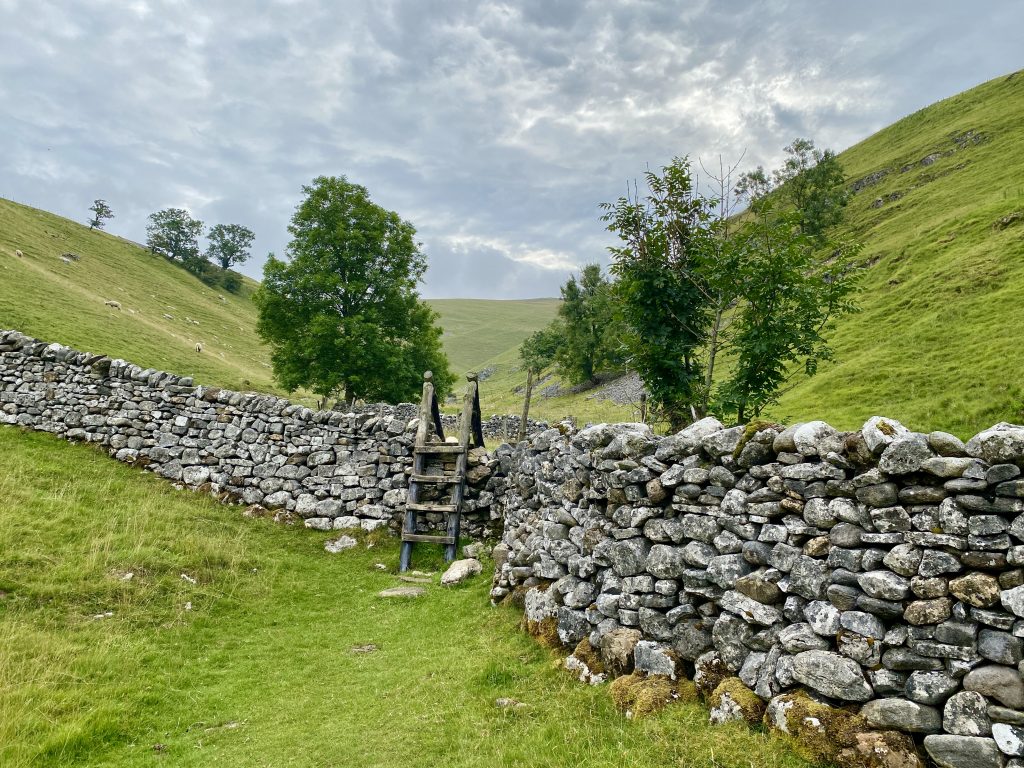
The path follows the course of Dowber Gill Beck all the way to Providence Pot.
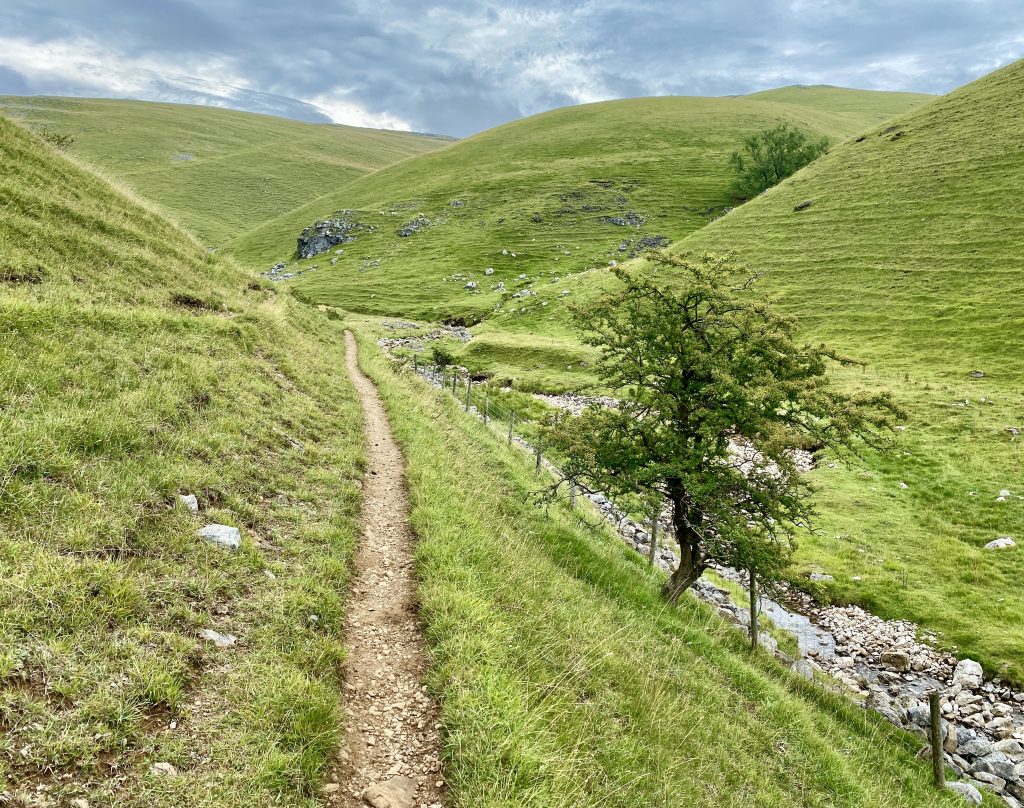
Waterfall created by Dowber Gill Beck.
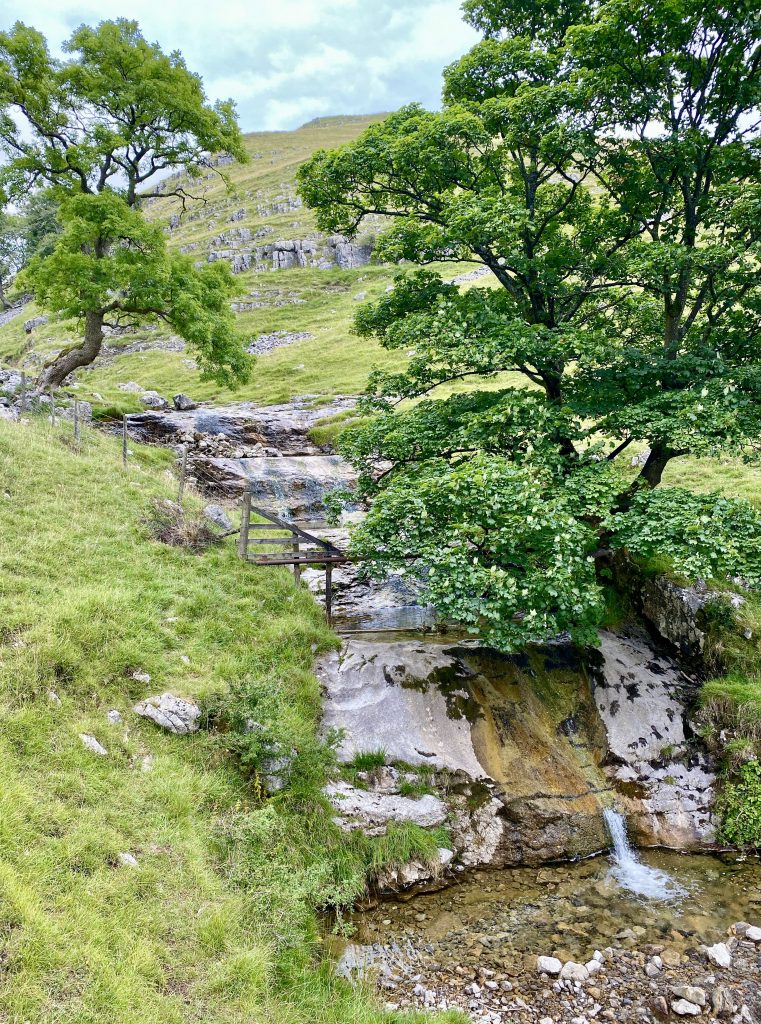
The picturesque valley is a pleasure to walk through.
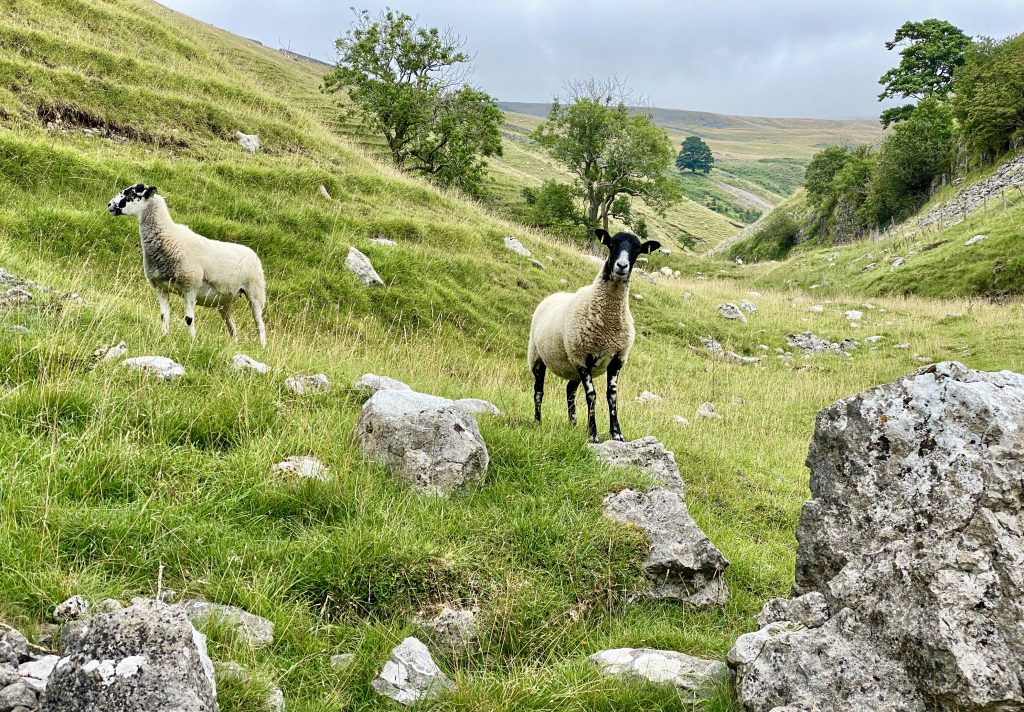
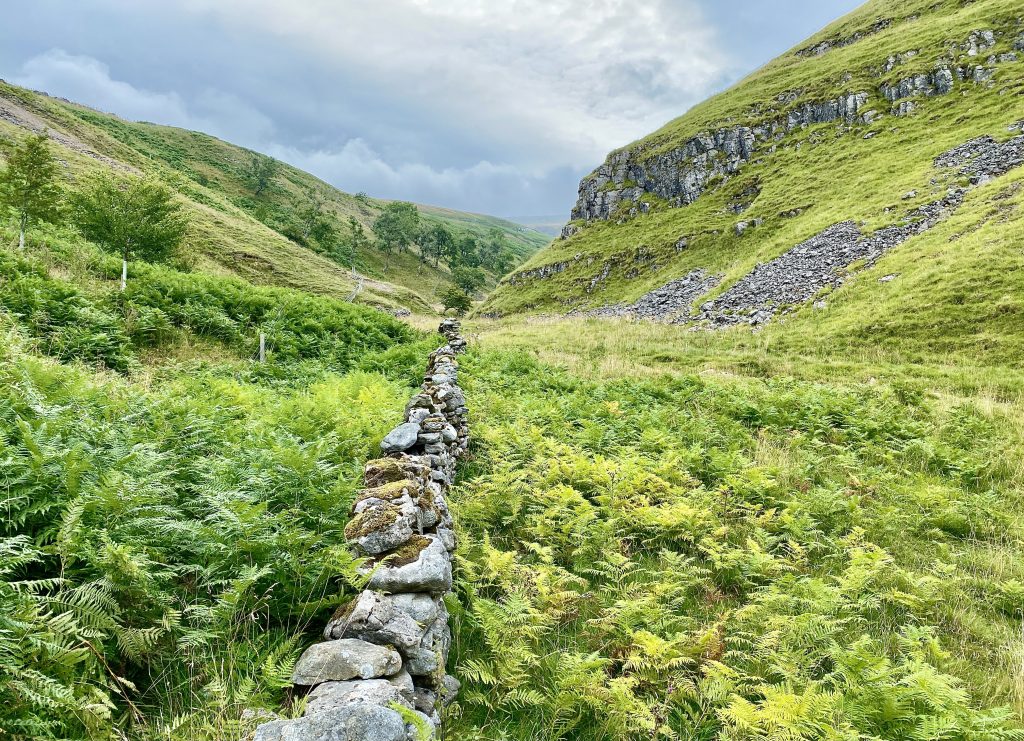
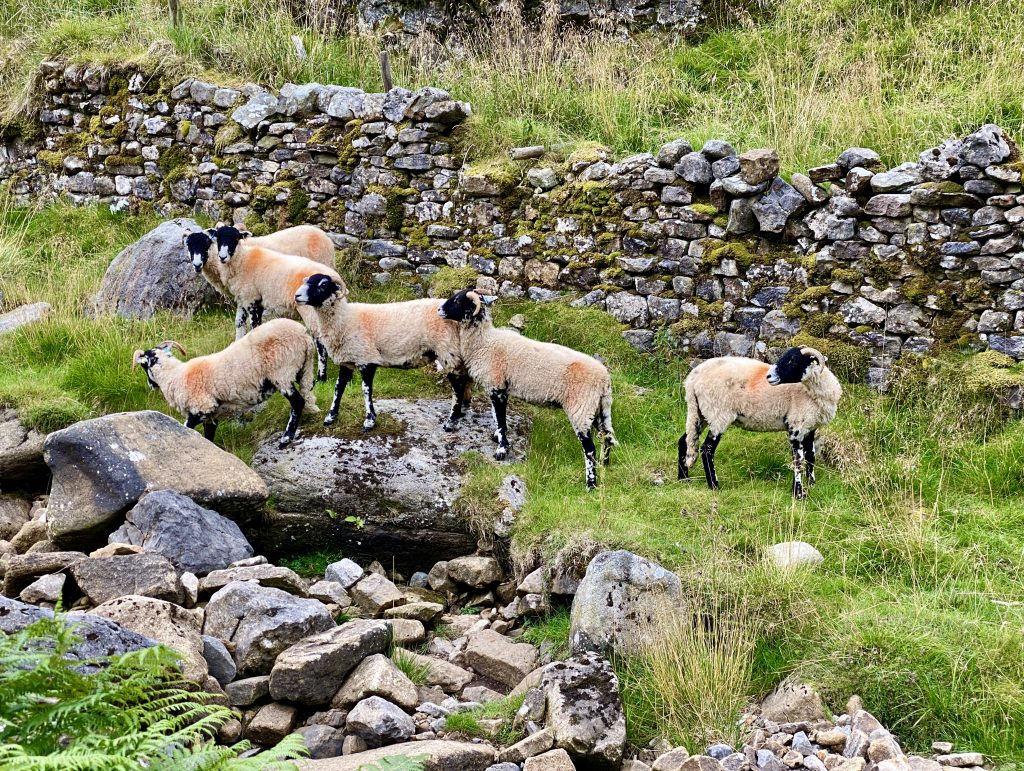
The entrance to Providence Pot, a series of large caverns connected by small passages beneath the limestone landscape.
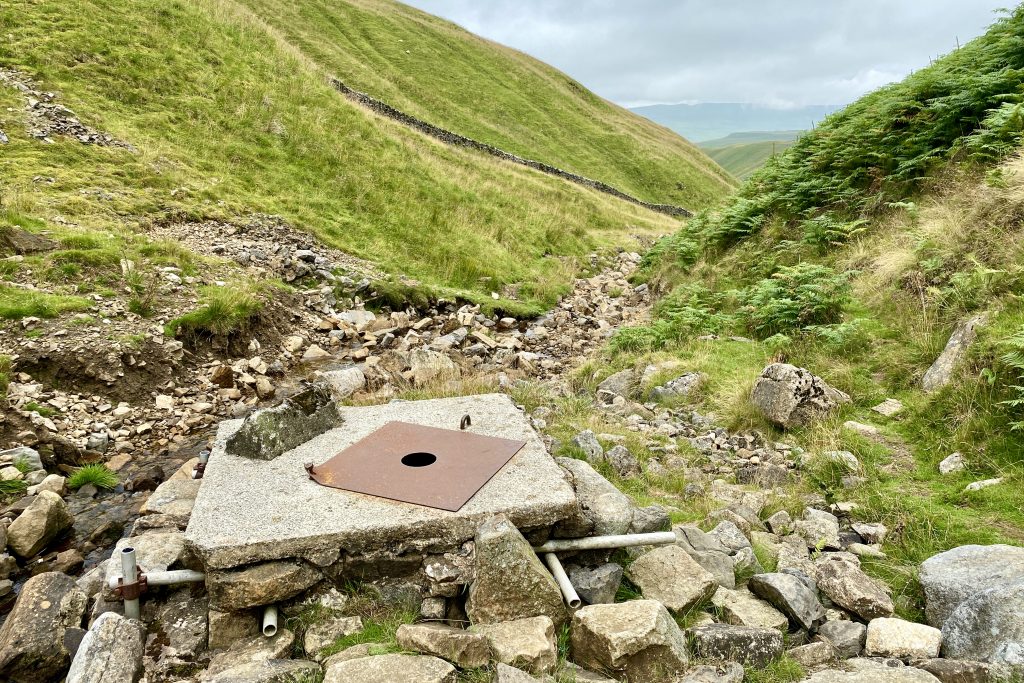
A look back at the valley between Kettlewell and Providence Pot.
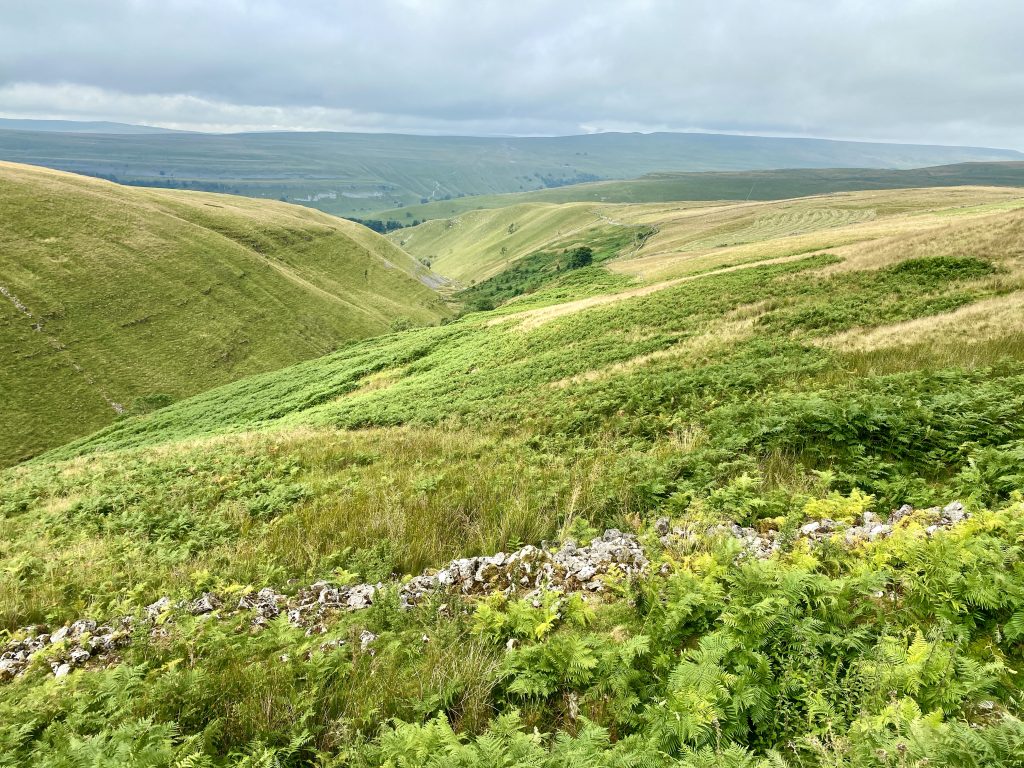
Hostel at Hag Dyke on the western slopes of Great Whernside.
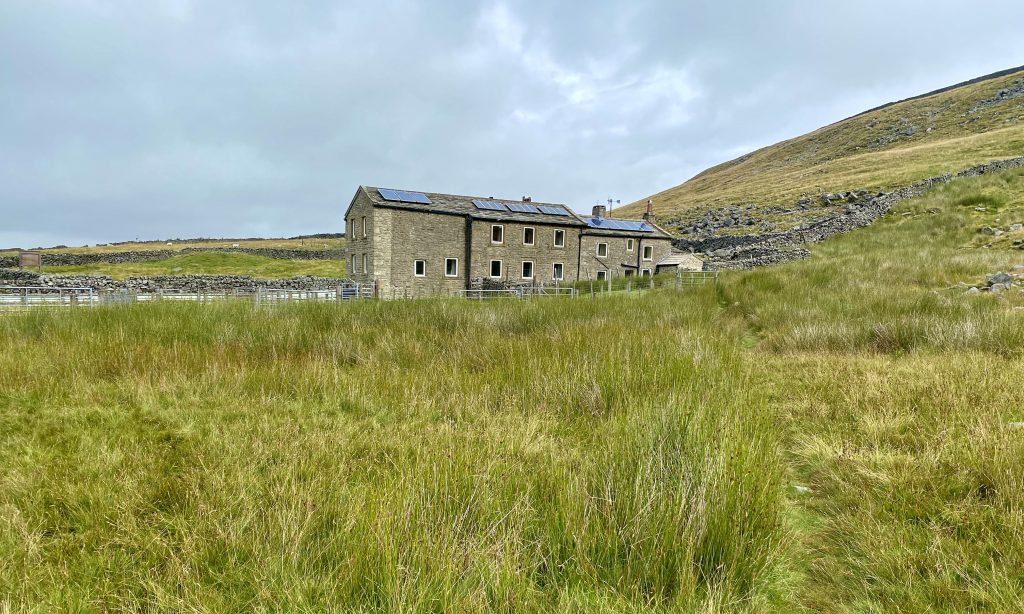
The hostel was once a farmhouse and its occupants can be traced back to the 1730s. However it is probably older and could have housed miners who worked in the nearby lead mines opened in the 1680s.
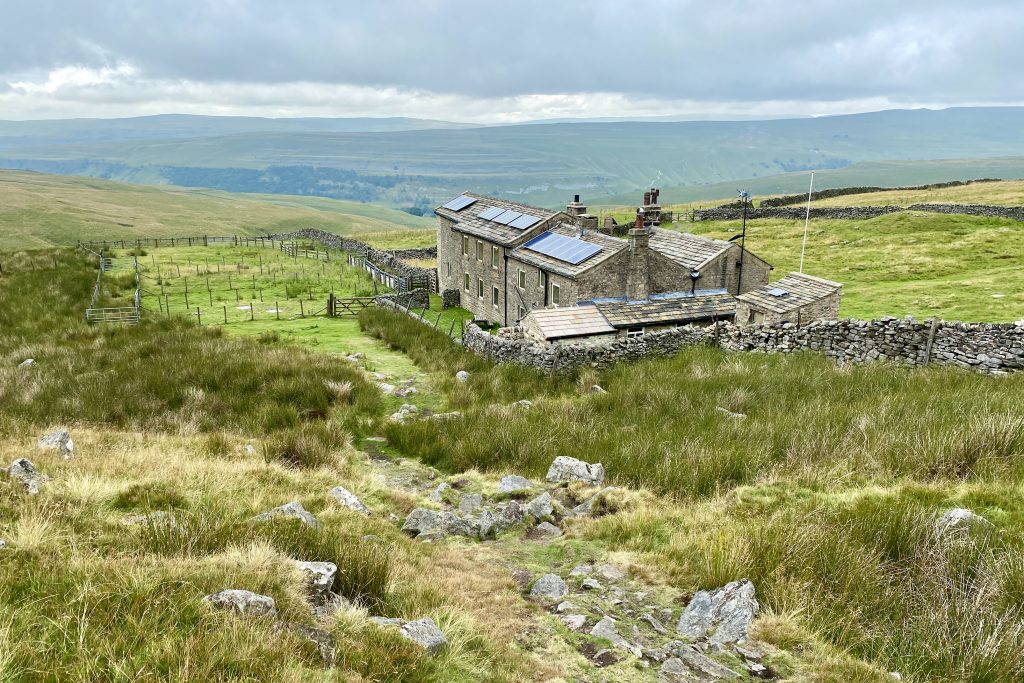
Triangulation pillar on Great Whernside summit, height 704 metres (2310 feet)
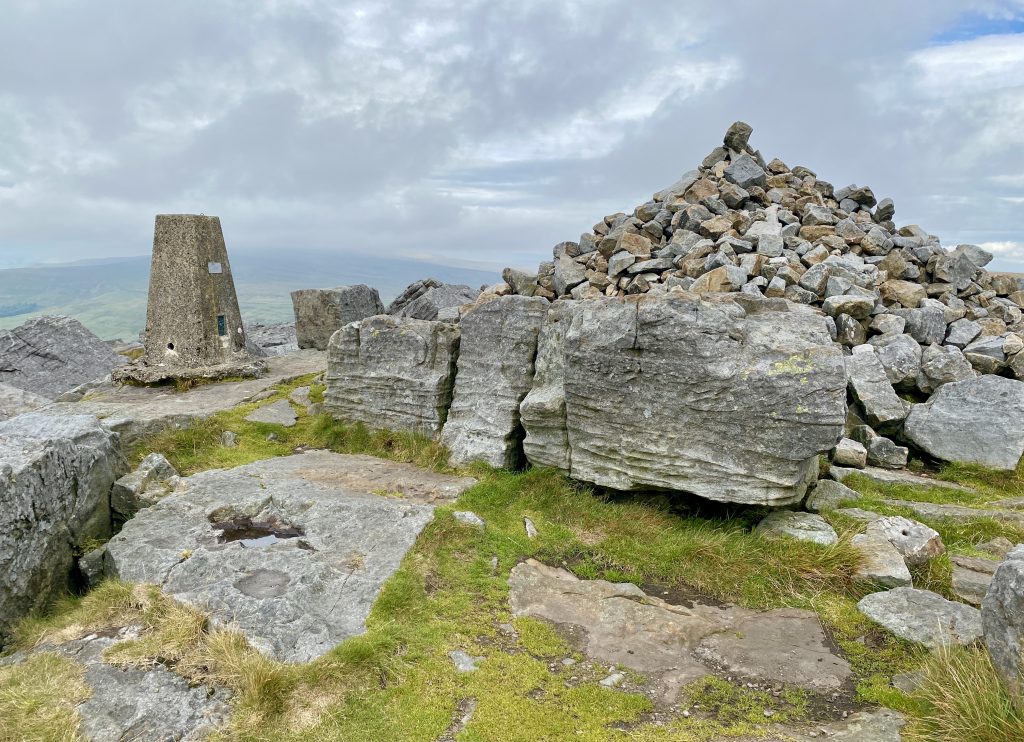
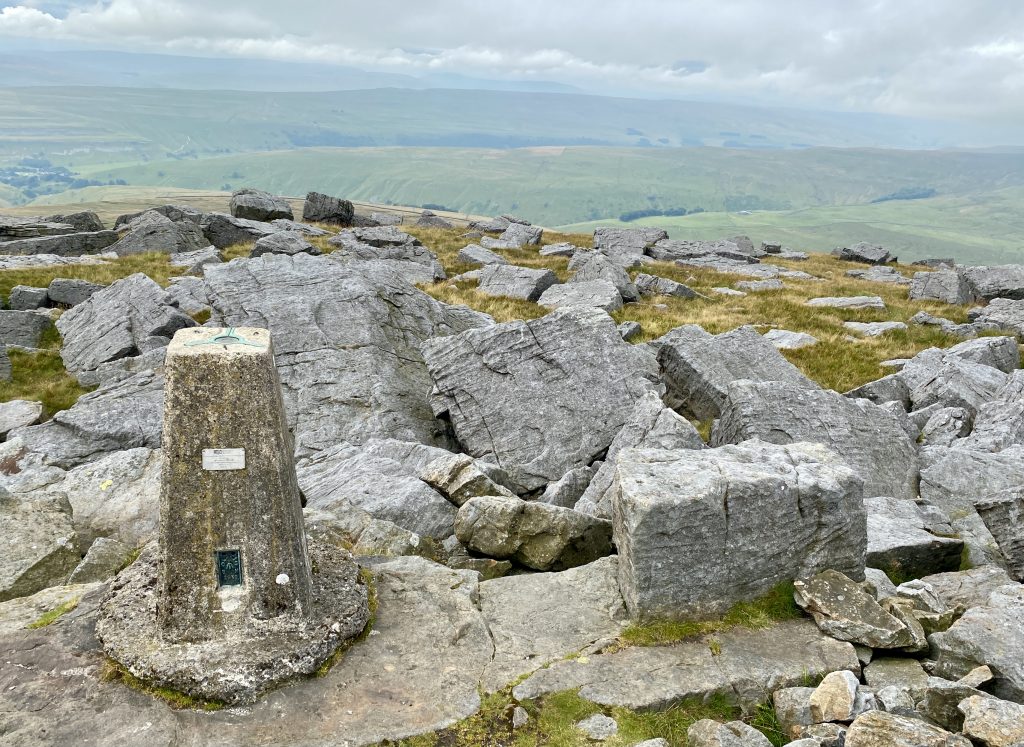
Following the fence line at Stone Head Crag. There is no official path between Great Whernside and Sandy Gate but the route crosses access land with open access rights.
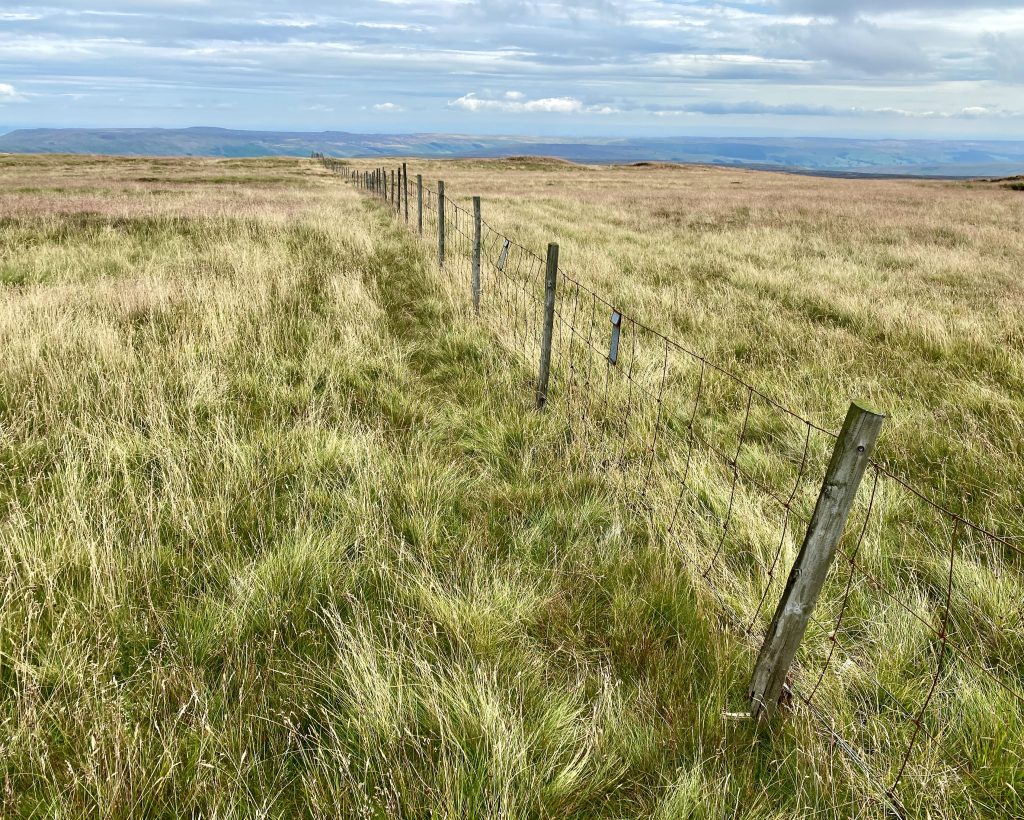
My first sighting of Angram Reservoir about 2½ miles to the north-east. The two high points behind are Little Whernside (left) and Dead Man’s Hill (right).
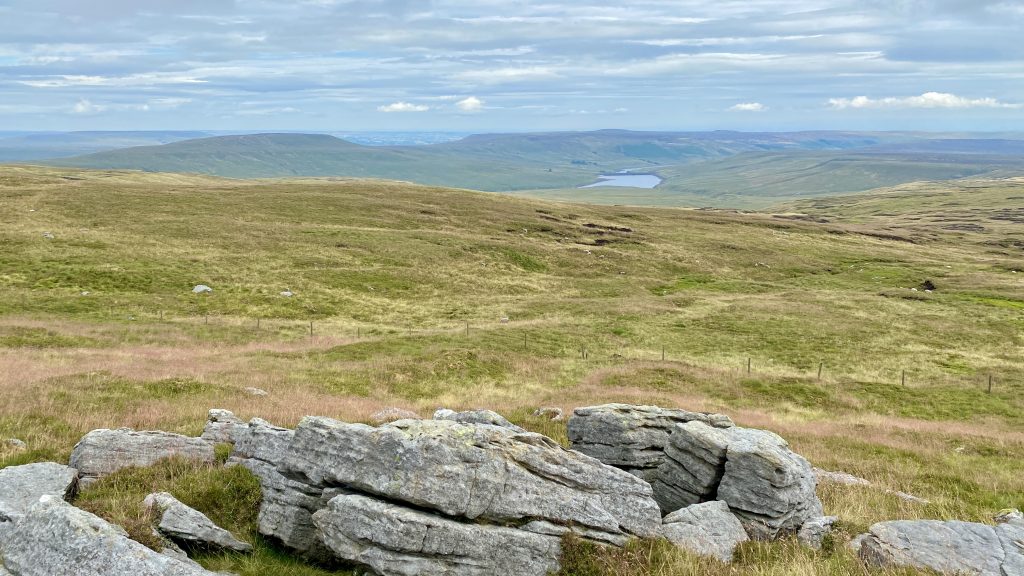
One of several ‘W.H’ boundary stones between Great Whernside and Sandy Gate. The boundary here separates Conistone Moor in the Yorkshire Dales and Riggs Moor in Nidderdale.
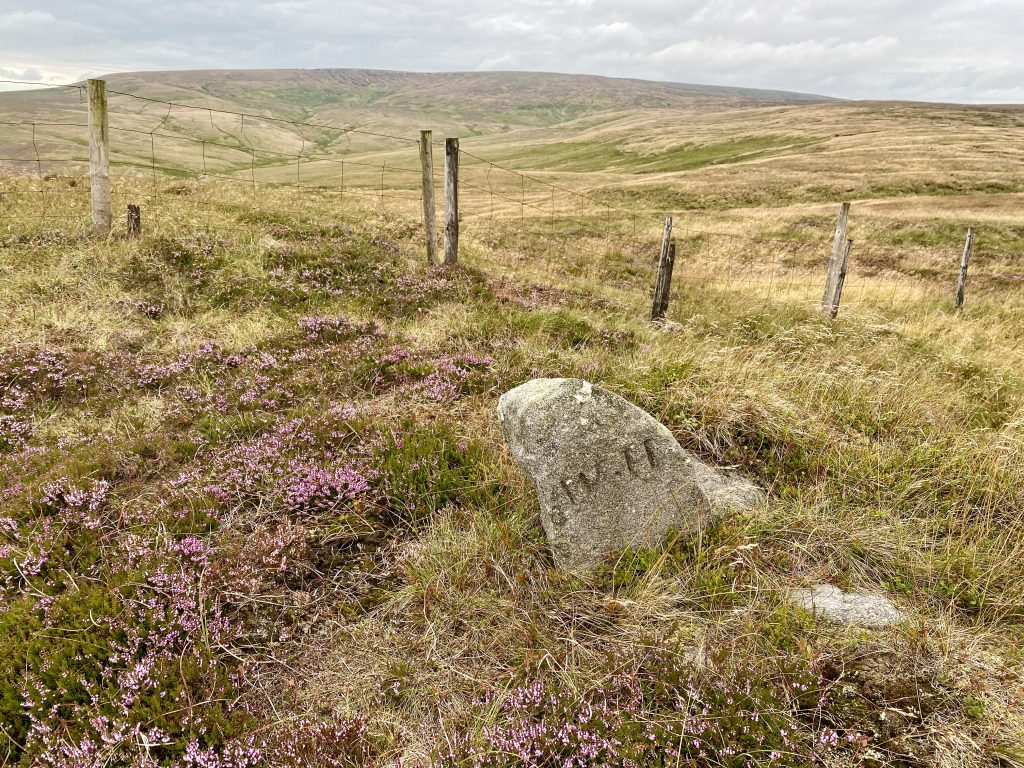
The view north-west to Great Whernside.
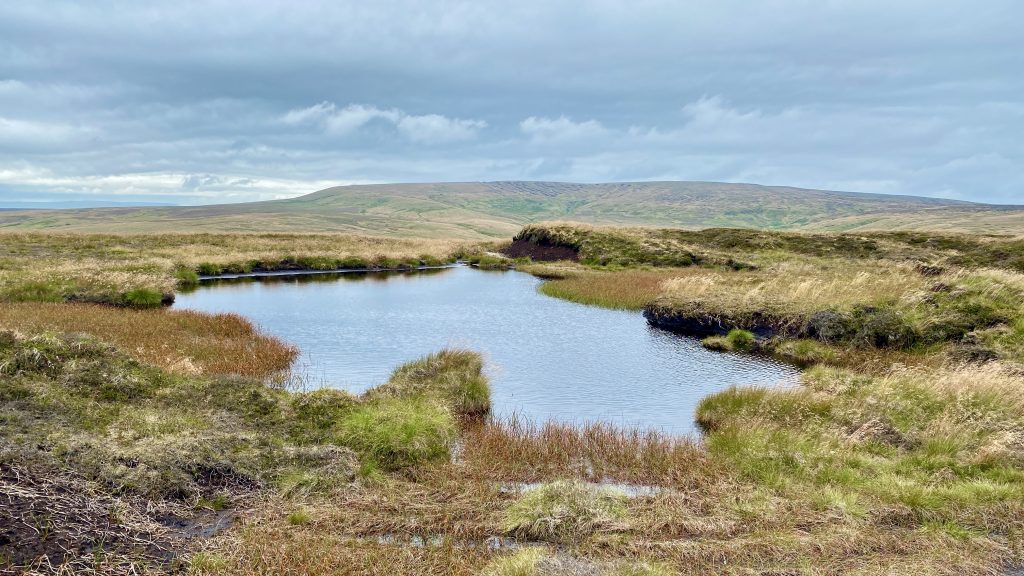
The style at Sandy Gate marking the start of the public bridleway down to Mossdale.
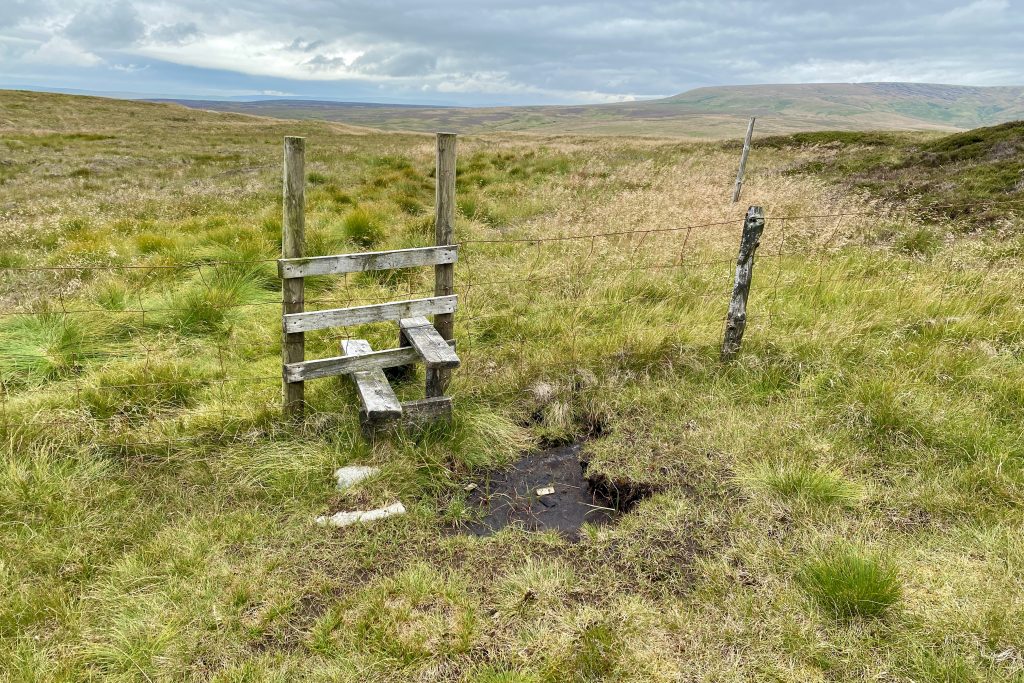
The view down to Mossdale.
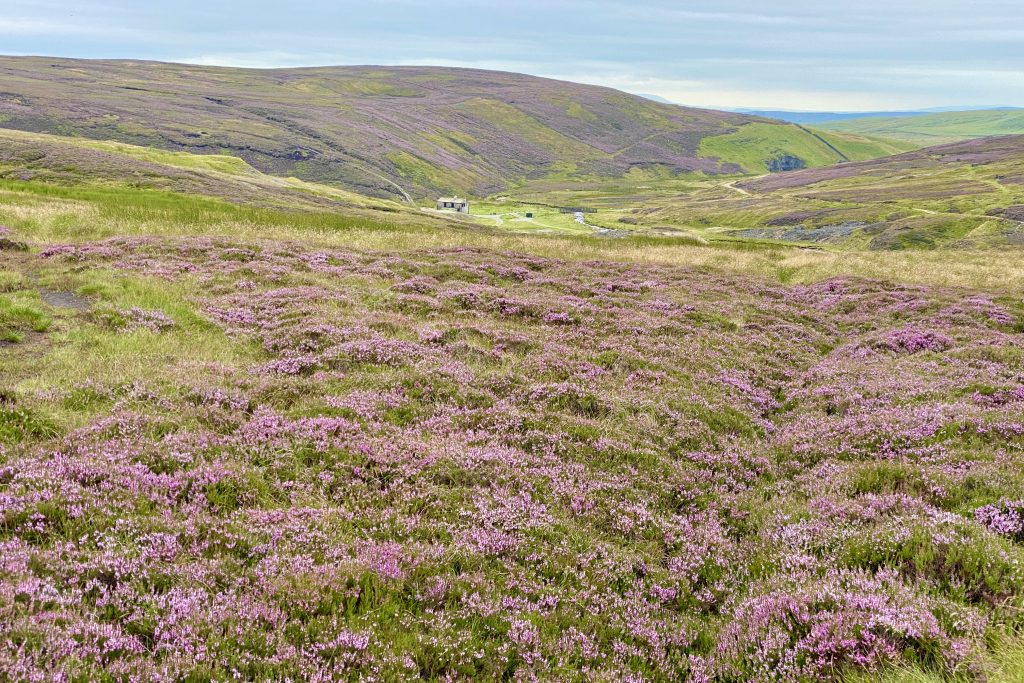
Shooting lodge and footbridge which crosses Mossdale Beck.
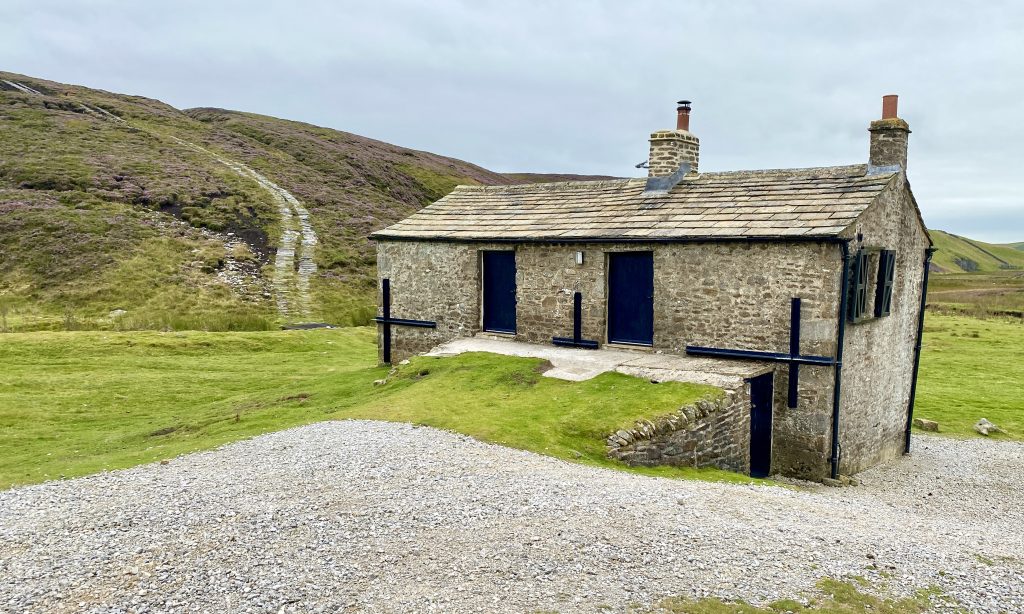
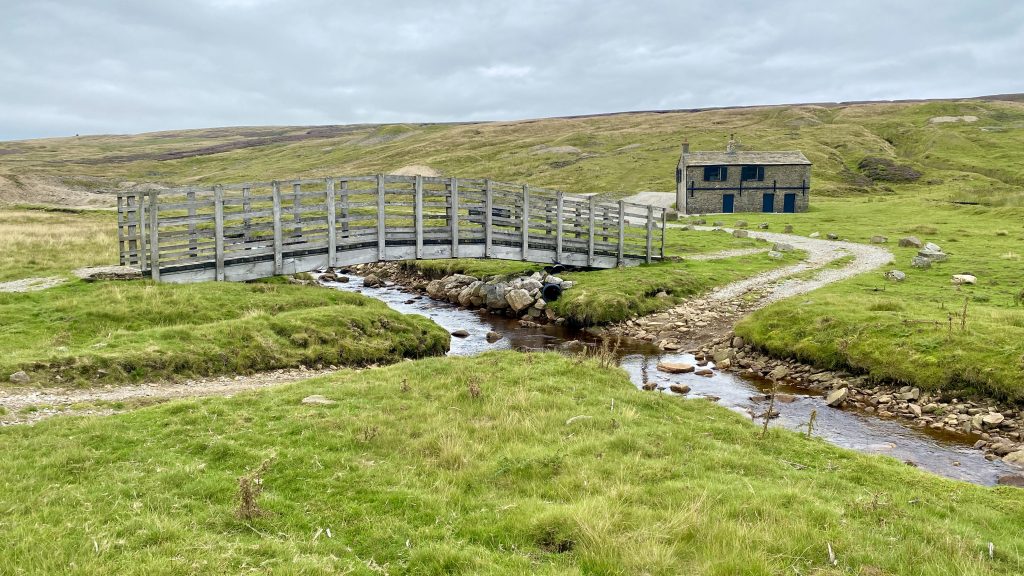
Mossdale Beck flowing south-west to Mossdale Scar.
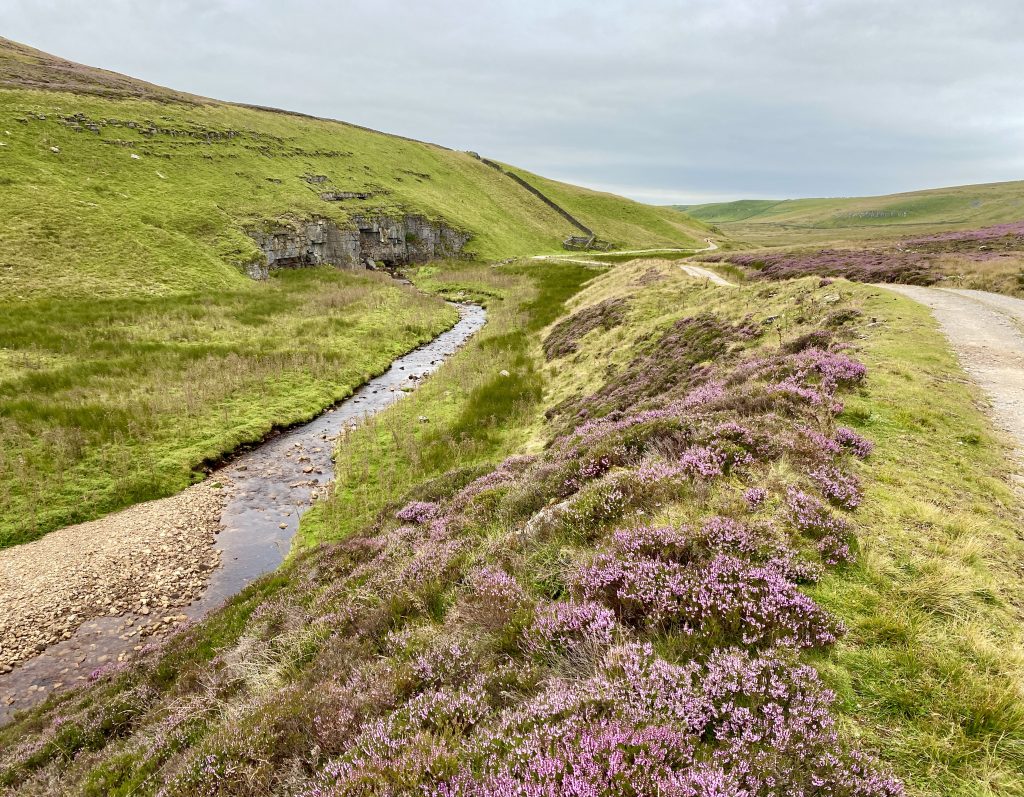
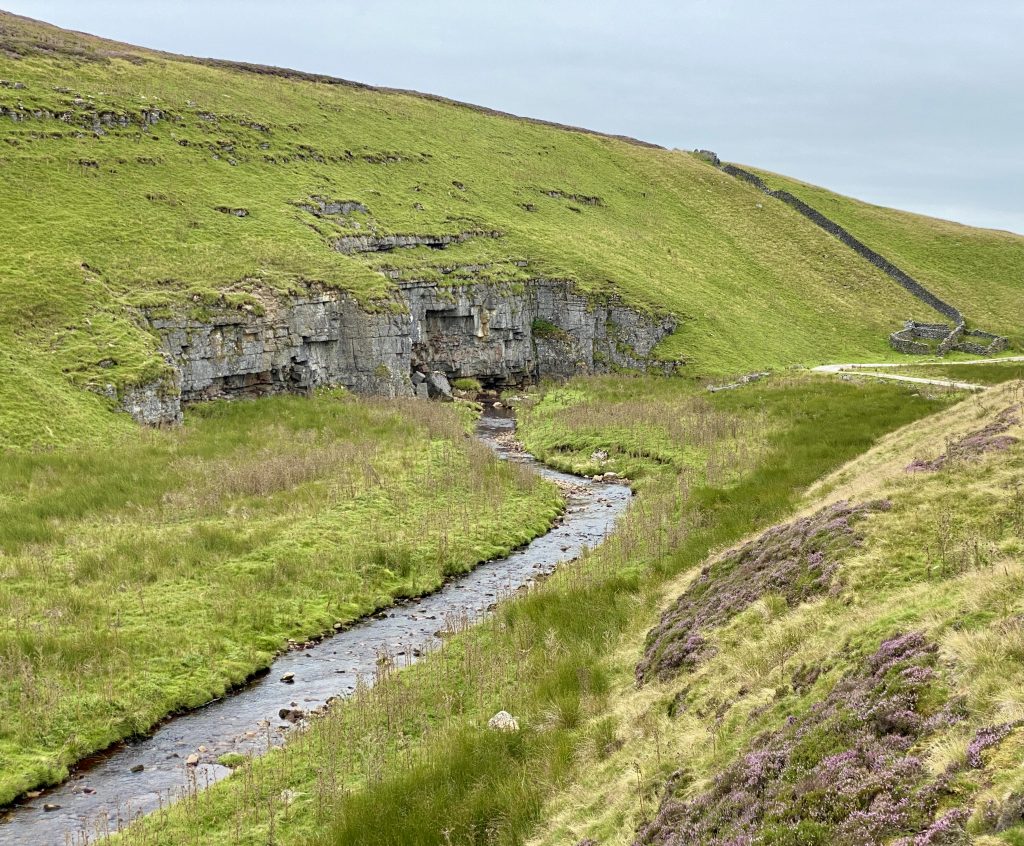
When the beck reaches the base of Mossdale Scar it disappears underground where it has helped to create a cave system known as Mossdale Caverns.
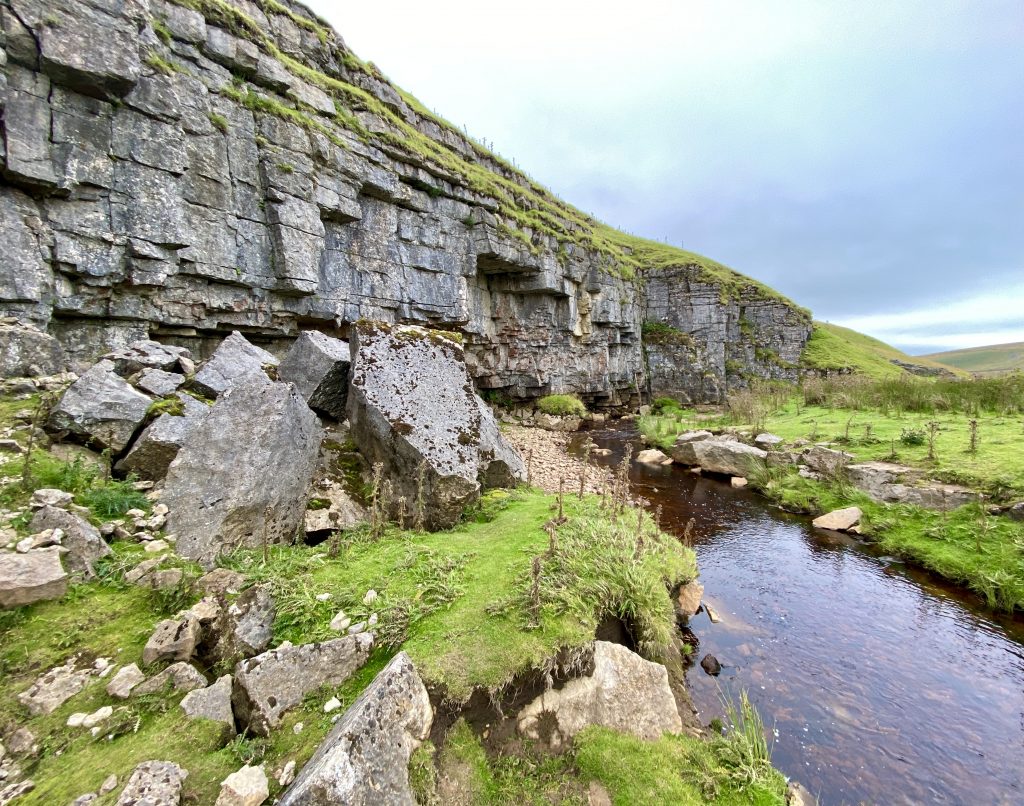
The beck has been shown by dye testing to resurface at Black Keld, about 2½ miles to the west near the River Wharfe.
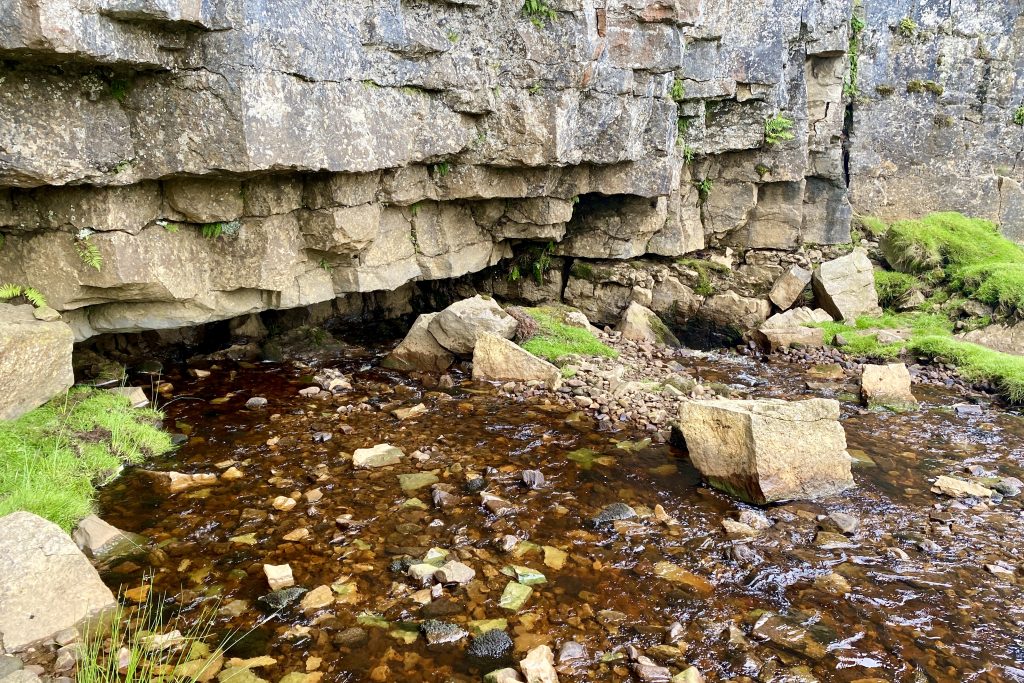
The 1967 Mossdale Caverns tragedy
The cave system is notorious amongst cavers in the United Kingdom for a tragedy that occurred on 24 June 1967. On that day, ten cavers entered the system. Three hours later, four members of the party decided not to continue and exited. One of these four returned to the entrance shortly afterwards, only to find it completely submerged due to recent rainfall having swollen Mossdale Beck. Realising immediately that the six cavers who remained inside the cave system were in danger, she ran 2½ miles across the moor to raise the alarm.
Cave rescue teams arrived at the scene, but the high water levels prevented access to the cave. The waters of Mossdale Beck had to be diverted away from the cave entrance by digging a trench. Even then the rescue operation could not be started because of the high water levels inside.
It was not until the following day that entry was possible. The cave rescue teams found the bodies of five of the cavers in the Far Marathon Crawls, and Bob Leakey led a search party to a location where he believed the sixth might have survived, but without success. The sixth body was located the following day. The bodies were left in situ. The coroner decided to seal the cave, and concrete was poured down the only safe entrance. This was later re-opened and in 1971, with the agreement of their families, the bodies were buried by their colleagues from the ULSA in “Mud Caverns”, a chamber at the far end of the system.
This is to date the most deadly incident in British caving. A memorial plaque is affixed to the cliff above the entrance.
Information from https://en.wikipedia.org/wiki/Mossdale_Caverns
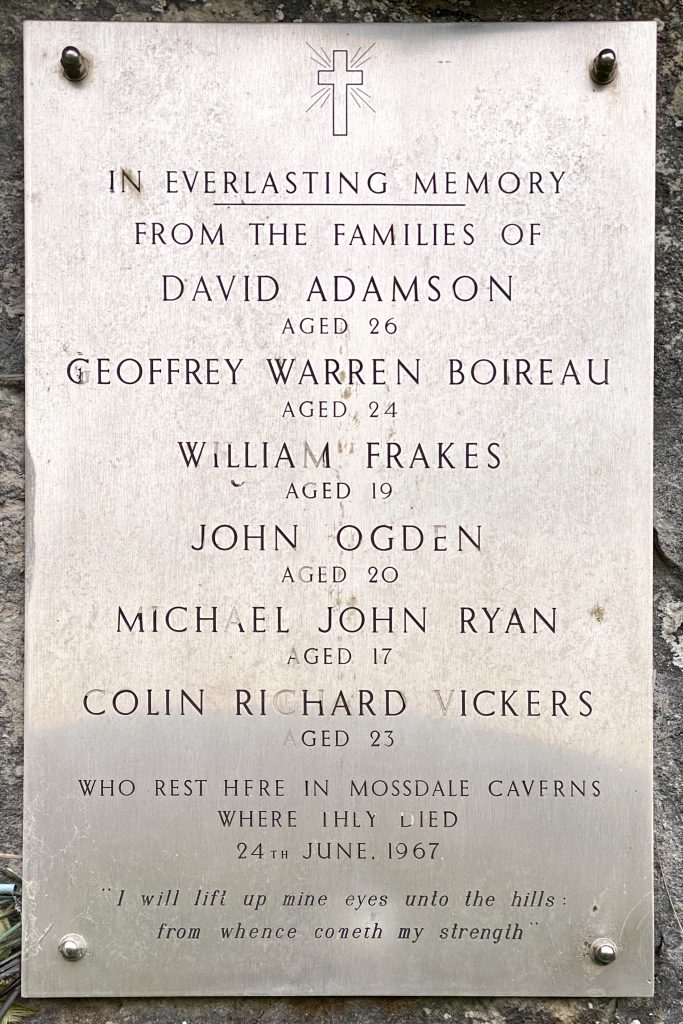
Young cows blocking my path so I decide to ‘take the high road’.

Beautiful limestone pavement at the bottom of Bycliffe Road where it meets the Dales Way.
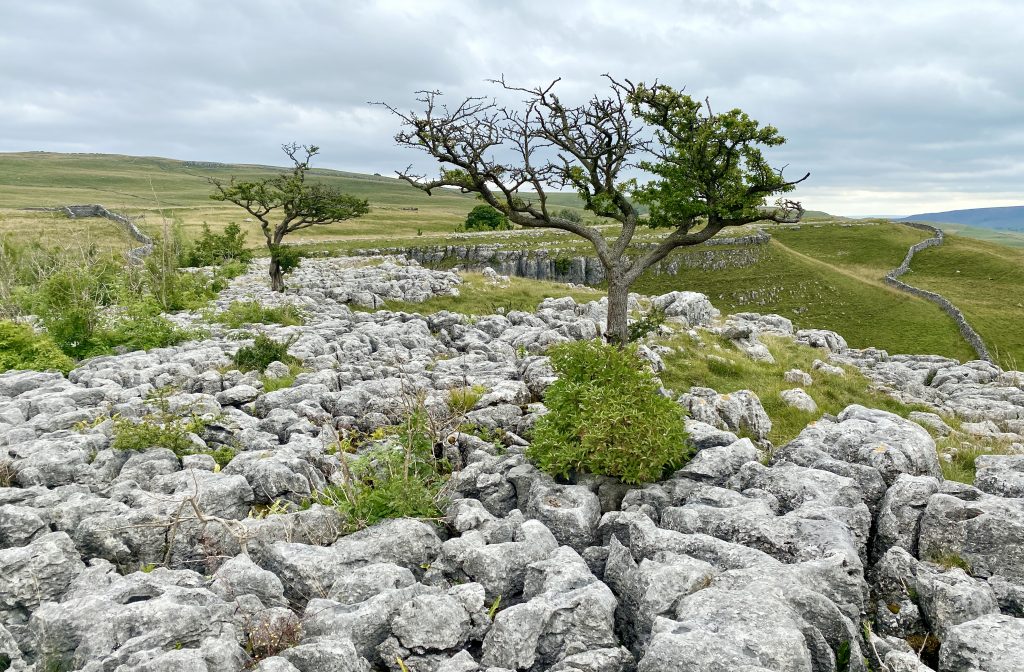
The view across to the southern end of the Birks Fell ridge which divides Littondale and Wharfedale.
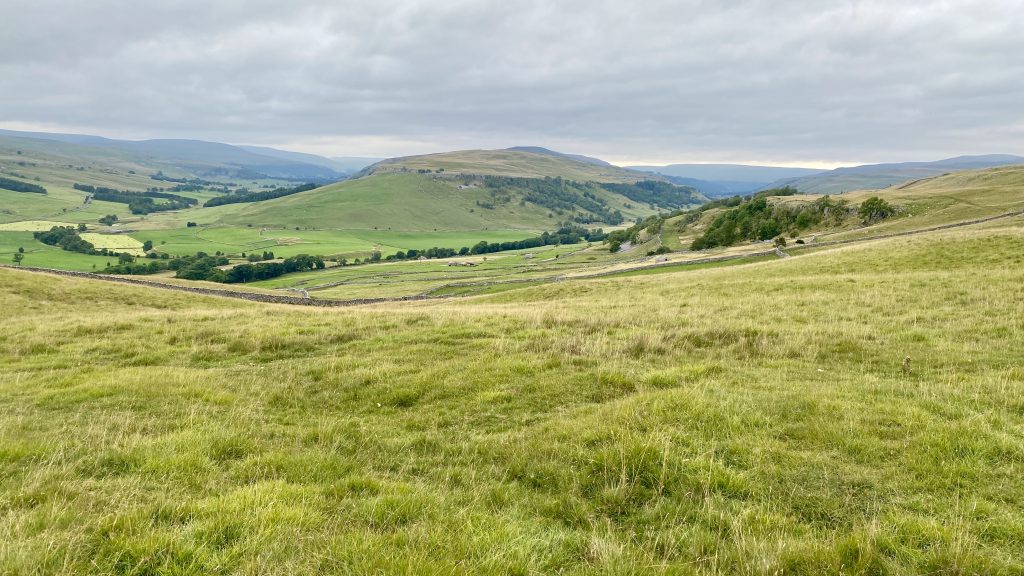
Looking west across Wharfedale from Swineber Scar to Kilnsey Crag.
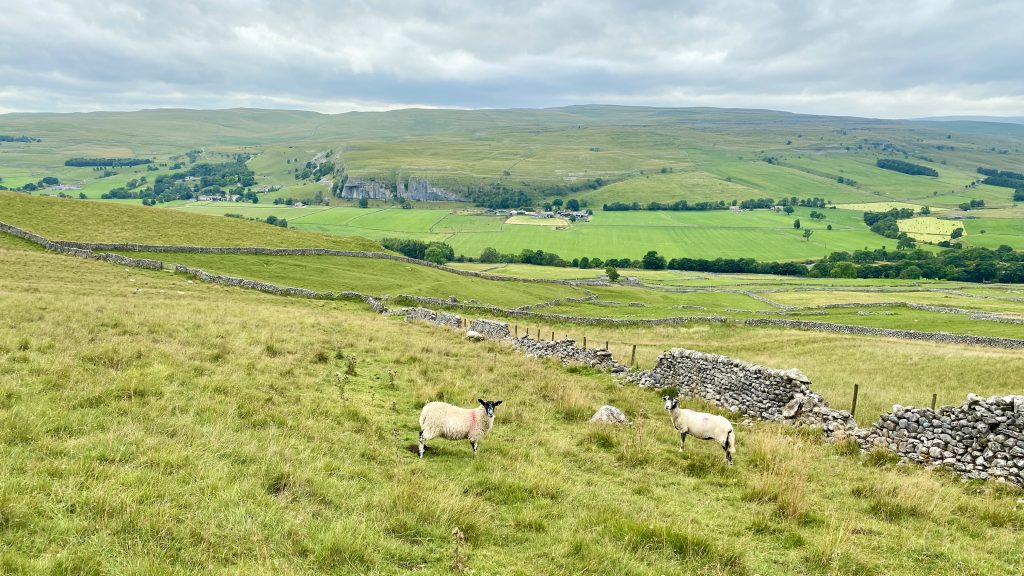
Highgate Leys Lane (Track) forming part of the Dales Way back to Kettlewell.
